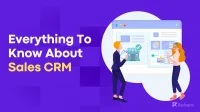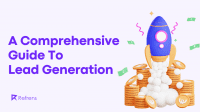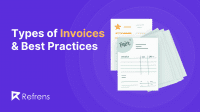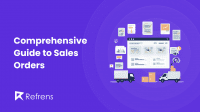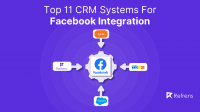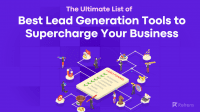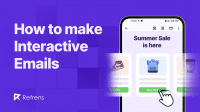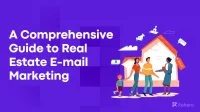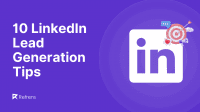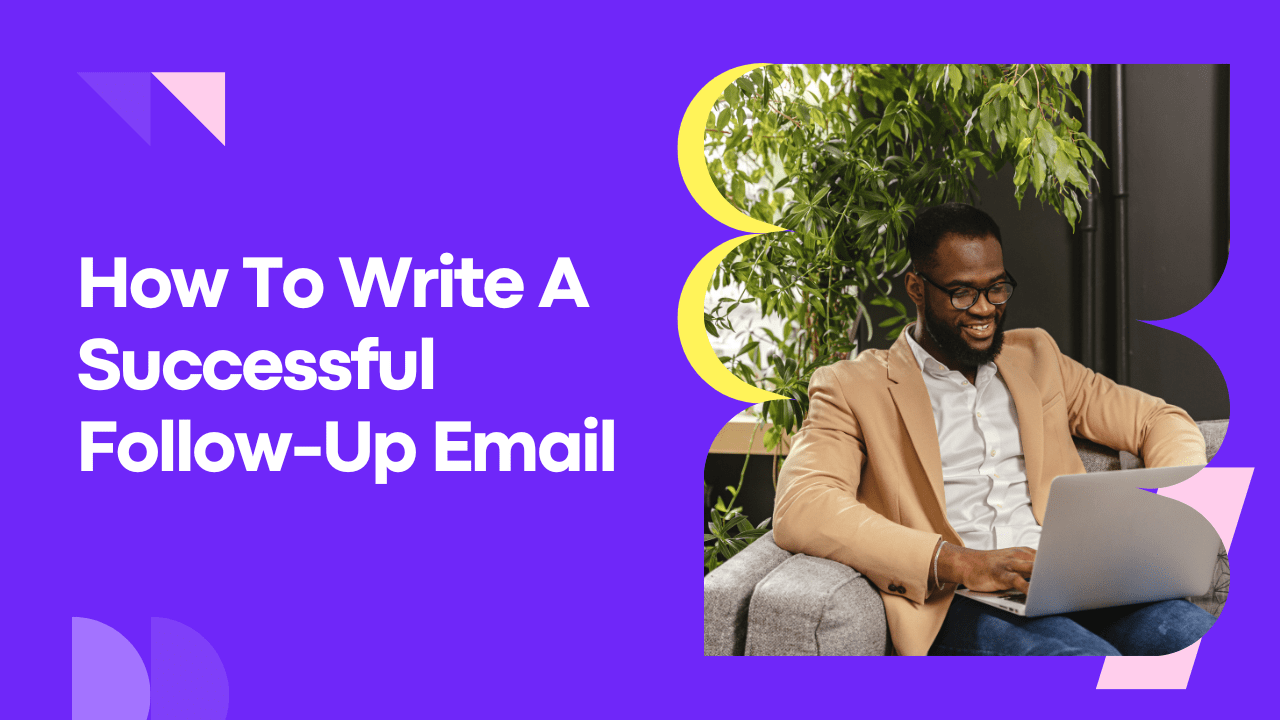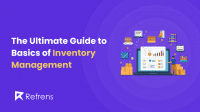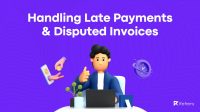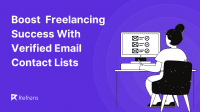Whether you are a small business proprietor or a service-providing freelancer handling your own clientele, you will agree with this fact: there’s no such thing as “enough clients” on board.
The growth curve of any kind of business – big or small, corporate or personal – depends upon its client base. The moment you stop reaching out to prospects is the moment you hit the saturation point and then whack – before you even notice, the curve is all dipping!
That is exactly why those popular LinkedIn sales gurus repeatedly emphasize the importance of keeping your sales pipeline full. It actually comes in handy should you ever feel the need to compensate for an urgent crisis. And that’s where the pivotal role of cold outreach comes into play.
According to recent research, 75% of surveyed executives don’t mind making an appointment with a business that reached out to them via cold outreach tactics like cold calls or emails. This means a fulfilled sales pipeline is readily available to garner new clients! Now that’s something incredible, right?
But the question is, how to make your cold outreach campaign so effective that you do not end up in the unfortunate 25% group? Well, our detailed guide will help you understand that.
Cold Outreach – Understanding Its ABCs
The idea of acquiring new clients from scratch may sound bogus to you if you have only been getting clients through inbound sales techniques. But it’s not.
Cold outreach is amongst the most preferred methods of obtaining new clients who are not already aware of your business. Forming a part of outbound sales strategies helps in widening a businesses horizons by expanding its market share. To genuinely connect with potential clients and humanize your conversations, try incorporating targeted and personalized linkedin outreach into your strategy. Engage your prospects in meaningful, authentic dialogues rather than generic pitches to spark genuine interest.
However, ensuring proper email deliverability is critical to the success of any cold outreach campaign. Without a proper DMARC setup, your emails may be marked as spam or even blocked entirely, affecting your outreach success.
Here’s how:
Essentially, cold outreach is when you proactively reach out to a person and introduce your services and products to them. The only difference? Unlike in the case of inbound sales, here, the person you’re reaching out to is completely new to your business and its offerings. Besides, the tone is not sales-y. Rather, the entire message is crafted with nitty-gritty personalizations and aims at selling through developing a relationship.
Earlier, cold calling via landline services used to be the most popular way of reaching out to a prospect in this regard. But today, it has been substituted by multiple other means of communication like email and social media. Despite these changes, mastering effective cold calling tips remains essential, as it helps in navigating initial conversations and building rapport with potential clients who may prefer this direct form of communication.
What Are the Benefits of Cold Outreach for a Business?
Cold outreach is a lot of hard work – agreed. But, it’s also lucratively advantageous for any freelancer or business that implements it mindfully. Here are a few of its benefits we want you to know about:
- Low cost: Cold outreach is a low-cost sales tactic. There’s no need for a team of sales experts or a bunch of tools and software to conduct a cold outreach campaign. Just start off with a Gmail account and a laptop, and you’re good to go!
- High returns: Not every cheap investment promises low returns – take cold outreach, for instance. Per the research, about 82% of prospects turn up for a meeting with businesses that cold call them! So although it is very inexpensive to kickstart a cold outreach campaign, it’s possible to reap high long-term returns by ensuring best practices and consistent client follow-ups.
- Immensely expansive: Even if your current market is geographically limited, with cold outreach, you can defy that. Through cold outreach, it’s possible to reach out to a wider set of audiences present across the globe.
- Scalable: Cold outreach is highly and inexpensively scalable. If you’re a freelancer/business owner, simply opt for the automation of cold outreach emails and LinkedIn contact requests and easily scale your list of potential clients.
- Increases brand exposure: This goes without saying! As you reach out to more and more people around the world, your business gets noticed. Thus, this helps in promoting the personal brand and even building one in the first place.
How to Identify Potential Clients for Cold Outreach?
Now that you know about the advantages of cold outreach for your business, we know you cannot hold back the temptation from leading off on your own. But here’s a little catch. If you do not zero in on your potential target market before launching a full-fledged cold outreach campaign, there’s a high chance all your efforts will go down the drain.
Let’s say you are a content writer. So for identifying your potential client base for cold outreach in this industry, here’s what you should do;
- Do your research: First things first, do some research. Your current customer base makes for a great stepping stone in this context. So, understand their characteristics. Most importantly, ask yourself – what makes them your customers? Knowing this will help you identify who else you should reach out to in the content writing industry via cold outreach.
- Identify the demographics: Finding out the basic demographic details of your present audience, like their gender, age, location, occupation, background, etc., can also help you big time. Through this, you can figure out the likes of your current audience, who are unaware of your business and might be interested in its offerings. That makes them the right target audience for your content-writing cold outreach emails.
- Other factors: Other than these two elements, you must also consider a few side factors. Like, take a step further and learn more about your current audience by understanding their interests, needs, lifestyle, and more. This will enable you to broadly classify your content writing cold outreach target audience around the globe.
How to Choose the Right Channels & Software for Cold Outreach?
It’s pretty obvious – to launch a cold outreach campaign, you will need software. Well, there is plenty of software for cold outreach that you can use. For instance;
- Woodpecker:
Woodpecker is a popular email automation software that allows users to send personalized and targeted emails to prospects and clients. It provides various features such as email tracking, follow-up emails, A/B testing, and integration with Sales CRMs and tools. It is designed to help businesses streamline their outreach process and improve their email deliverability rates. It is commonly used by sales and marketing teams to increase their email response rates and conversions.
- QuickMail:
QuickMail is a cloud-based email automation software that enables users to send and track personalized cold emails at scale. It offers features such as email templates, A/B testing, automatic follow-ups, and integration with various CRMs and other tools.
QuickMail is designed to help businesses automate their outreach process and improve their email deliverability rates. It is commonly used by sales teams, growth hackers, and marketers to generate leads and increase conversions. It also provides in-depth analytics and reporting, which helps users track the performance of their email campaigns and make data-driven decisions.
- SalesHandy:
SalesHandy is a sales engagement platform that offers a variety of tools to help sales teams increase their productivity and efficiency. It includes features such as email tracking, email templates, automated follow-ups, document tracking, mail merge, and more.
SalesHandy is designed to help sales teams streamline their outreach process, improve their email response rates, and close more deals. It integrates with various CRMs and other tools such as Gmail, Outlook, Salesforce, HubSpot, and more. SalesHandy also provides in-depth analytics and reporting, which helps users track the performance of their email campaigns and make data-driven decisions.
Although software makes the task a lot more efficient, it’s still important to choose the right one to ensure you’re reaching your target audience effectively. So here are some steps to help you choose the right software for your cold outreach:
- Identify your target audience: The first step in choosing the right channels and software for cold outreach is to identify your target audience. So once you know who you are trying to contact, figure out what channels they use to communicate effectively.
- Research your options: There are many different channels and software options available for cold outreach. So it’s important to research your options and find what’s right for you. Some popular ones include email, LinkedIn, and social media.
- Evaluate your resources: Consider your resources when choosing the right channels and software for cold outreach. Do you have the manpower and budget to execute a large-scale email campaign, or do you need a more cost-effective solution like LinkedIn?
- Test and measure: Test your cold outreach channels and software and measure their effectiveness. This will help you determine which channels and software are delivering the best results and where you should channel your efforts.
- Refine and adjust: Finally, refine and adjust your cold outreach strategy based on your results. What worked well, and what needs improvement? Make changes and keep testing until you find the right channels and software for your business.
5 Common Objections Faced During Cold Outreach & Techniques for Handling Them
Let’s say you managed to pinpoint your audience to the best of your ability and also chose the most suitable channel for your cold outreach drive. But does it promise smooth sales? Of course not.
Objections are frequent during cold outreach emails and calls, and there’s absolutely no way you can completely avoid them. So instead, learn to deal with them. Here’s a roundup of 5 of the most common objections you may face during cold outreach and how to address them like a pro;
- Lack of Need: “I don’t need this service.”
As a freelancer, you may often hear the prospect on the other side tell you that they do not require or want the service that you’re offering. This clearly depicts a lack of need for what you’re selling.
How to tackle this objection?: Take this cue as an opportunity to introduce your service to the prospect. Show them your freelancer portfolio, talk about your previous work experience and the kind of projects you’ve done, give them a few client reviews, etc.
- Lack of Trust: “I have never heard about you, so I can’t buy.”
If you are relatively newer in the market, you’re most likely to get tons of this objection. After all, personal branding often ends up being the decisive factor in sales. But this doesn’t mean the pitching has to end there.
How to tackle this objection?: When you encounter this objection, ask for a few minutes from the prospect and tell them about yourself and the services that you provide. Don’t force acclaim – this will make you sound sales-y, and we don’t want that. Rather, be genuine and honest. For starters, show them your client testimonials to build trust.
- Lack of Budget: “The service you’re selling is way too expensive.”
Price-based objections are pretty common and notorious for being one of the biggest speedbumps in cold outreach. Even if you think you’ve fairly priced your service, it’s normal for a prospect to find it expensive. So here’s what you should do.
How to tackle this objection?: Openly communicate with the prospect. Talk them through the value of your service. Another way to tackle this problem is by adding a flexibility element to the price. This means instead of giving them a lump sum figure, tell them about the monthly/weekly payment options.
- Lack of Urgency: “I don’t need the service now.”
There will be times when you get on a cold call with a prospect, earn their interest in the service, and almost get them to make a sale. But just then, they will turn you down by saying they don’t urgently need it. This could be due to multiple reasons or a simple attempt to brush off your pitch.
How to tackle this objection?: Let’s say you’re a content writer facing this objection. The simplest way to tackle this issue is to ask your prospects why they do not want the service right now. This will help you understand their actual pain point – whether they have issues with your rate, a better content writing service in place for their company, etc. Once you understand that, weave your pitch accordingly. One clever option is to offer them a discount on your rates or simplify the billing. Alternatively, if they have a substitute, point out how your service is different and can add better value to their business.
- Lack of Time: “I’m too busy at the moment.”
Time-based objections occur either because your prospect is really in the middle of something or because they’re trying to conceal a whole different, bigger objection. So the key here is to find that out.
How to tackle this objection?: If you get the hint that the prospect is actually busy, do not insist further – simply schedule a meeting at a later date. If you feel they’re just vaguely trying to shove you off, be polite and ask them if they could lend you just 5 minutes. You never know; perhaps they’re overestimating the time it may take to discuss things. So be upfront and ask openly.
Tips for Launching a Successful Cold Outreach Campaign
Now that you are all set to launch your first cold outreach campaign, here are a few quick tips that you should follow to ensure success;
- Set up a warm-up email account: A warm-up account is typically an email account that is used to send a moderate volume of emails to a small number of recipients over some time. To set up an email warm-up account, choose an email service provider, create a new email account, gradually increase the volume of emails you send, and vary the content and sending frequency. This will help to establish a positive reputation for your email domain and increase deliverability.
- Add email signature: An email signature adds credibility and professionalism to your cold email and makes it easier for recipients to contact you. To add an email signature in cold emails, create a professional signature with your name, title, and contact information, and include a call-to-action or link to your website.
- Research thoroughly: As mentioned earlier, a significant portion of your cold outreach campaign’s success depends on thorough research to accurately identify your target audience. Using an email verifier is essential here, as it ensures that you’re reaching valid contacts within your audience. So be very specific about who you want to reach out to because, in any case, otherwise, it’ll all just be a waste of time and energy.
- Create a list of email addresses: After this, you need to create a list of email addresses. There are a number of tools and resources available to help you do this, such as lead management software, industry directories, and social media networks.
- Craft your email: The next step is to craft your email. Your email should be personalized, concise, and attention-grabbing. Make sure to include a clear subject line, an introduction that establishes your credibility, and a call to action that compels the recipient to take the next step. Avoid using jargon or complicated language.
- Personalize: Cold outreach efforts with a touch of personalization almost always reap a positive result. So, do not follow a mundane, general script. Personalize all your cold emails and calls with hyper-specific, personal elements – talk about the prospect’s likings, add a touch of humor to make it sound more human, etc. According to the state of cold email research, 73% of decision-makers say that personalized emails are more likely to prompt a response.
- Test your email: Before sending your email to your entire list, it’s important to test it out. Send a few emails to yourself or colleagues to make sure that everything looks and functions correctly. This will help to avoid any embarrassing mistakes and increase the odds of getting a response from your target audience. Additionally, you can verify your email addresses with tools like Zerobounce or other better zerobounce alternatives to ensure good deliverability.
- Emphasize providing value: To ensure your cold email emphasizes providing value, start by researching the recipient’s needs and goals, and tailor your message accordingly. Focus on the benefits of your product or service, and include specific examples or case studies to demonstrate how you can help the recipient.
- Don’t focus on selling: We know you want to sell. But don’t focus on selling too aggressively. Remember, the goal of every cold outreach tactic should be to acquire long-term clients for the business and not just make one-time sales by any means.
- Follow-up: A lot of sales reps believe cold outreach ends at the first attempt itself. That’s absolutely false. Following up with a prospect multiple times after the first call or email almost doubles the chances of a response! So, make it a point to follow up with your prospects!
Engaging Cold Outreach Templates That We Swear By
Here are some compelling cold outreach templates that are sure to yield you a response from the prospect;
Cold Outreach Template (For emails)
Subject: Introducing [Your Company] and Our [Product/Service]
Dear [Recipient’s Name],
My name is [Your Name], and I’m the [Your Position] at [Your Company]. I came across your company [Their Company] and was impressed by your work in the [Industry]. I believe that our [Product/Service] could be of great benefit to [Their Company].
At [Your Company], we specialize in [Brief Description of Your Product/Service]. Our [Product/Service] has helped numerous businesses like yours [Key Benefit of Your Product/Service].
I would like to schedule a call with you to discuss the possibility of [Your Company] providing [Their Company] with [Your Product/Service]. During the call, I’ll be happy to answer any questions you may have and provide you with more information about our company and how we can help you.
Thank you for taking the time to read my email. I look forward to hearing back from you soon.
Best regards,
[Your Name]
Cold Outreach Template (For LinkedIn)
Subject: [Personalized Greeting] – [Brief Introduction to Your Company/Service]
Dear [Recipient’s Name],
I hope this message finds you well. I came across your profile on LinkedIn, and I was impressed by your experience in [Their Industry]. I believe that we could potentially have a mutually beneficial relationship.
I am [Your Name], the [Your Position] at [Your Company], where we specialize in [Brief Description of Your Company/Service]. Our [Product/Service] has helped numerous businesses like yours [Key Benefit of Your Product/Service].
I would like to connect with you and see if there’s an opportunity for us to work together. I believe that our [Product/Service] could greatly benefit [Their Company], and I would love the chance to discuss this with you in more detail.
Thank you for your time, and I look forward to connecting with you soon.
Best regards,
[Your Name]
Wrapping Up
Cold outreach is a sales essential – not only because it boosts revenue but also because it has the potential to acquire clients in the long run.
In this blog, we discussed everything about cold outreach, especially highlighting the ways you can use it to acquire clients for your business.


